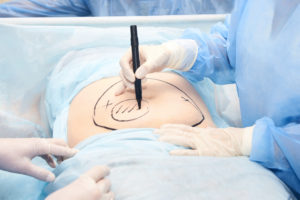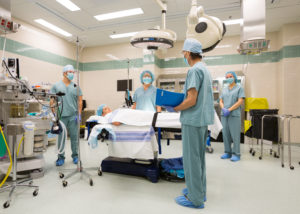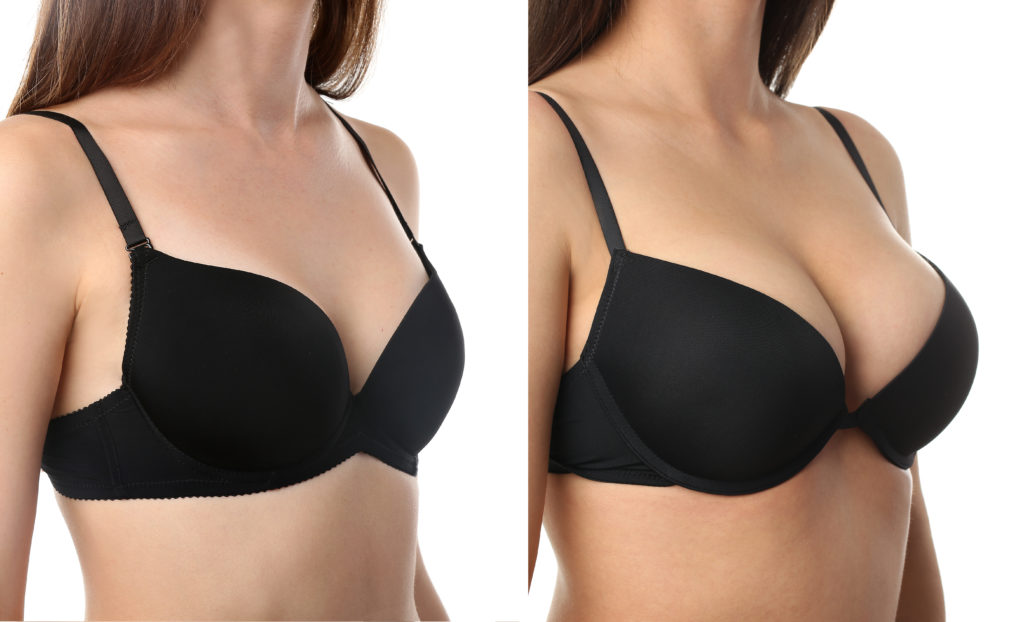Truth or Fiction About Fat Transfers To Breasts
It may seem like it’s too good to be true, but there is a way to increase your breast size without having to undergo a traditional breast augmentation with implants. You may have heard of body-contouring surgical procedures like a Brazilian Butt Lift, which involves harvesting fat via liposuction and transferring it into the buttocks to enhance its size and shape, and wondered, “Can you transfer fat to breasts?” The answer is absolutely yes! Like every other surgical procedure, it’s important to weigh fat transfer to breast pros and cons before making such a major decision.
A fat transfer to the breasts, sometimes called a natural breast augmentation, a fat transfer breast augmentation, or fat grafting, is a two-part process that takes excess, unwanted fat from one part of the body through liposuction and injects it into the breast to enhance their size and shape. The results can be more natural in look and feel than implants and it leaves no scarring on the breast. Plus, there’s also the sculpting benefits that come with liposuction. It’s often chosen by women who want to enhance their breasts but are hesitant to undergo typical breast augmentation with implants because of the maintenance and risks associated.
True or false: liposuction and fat transfer to the breasts is safe.
True! While overwhelmingly an extremely safe procedure, there are minimal risks involved, mostly in the liposuction part of the procedure, but generally can include, like all procedures, infection and scarring, as well as loss of breast functionality (i.e. nipple sensitivity and loss of breast feeding ability). Any time you do surgery on the breast you can potentially affect the functionality, though it’s important to note there’s no evidence that shows any loss of breast feeding ability caused by a fat transfer breast augmentation.
True or false: the recovery from a natural breast augmentation is hard.
 False! As with any surgical procedure, there is of course recovery time. However the recovery from fat transfer to breasts is markedly less than with traditional breast augmentation with implants. Each patient and procedure is different, so each recovery will be different. Generally speaking, your liposuction recovery (and therefore your liposuction recovery time) is actually going to be more significant than the fat transfer recovery. You should give yourself about two weeks to recover: three days of solid downtime and relative downtime for the remainder of the two weeks. Some patients feel comfortable returning to work after five days, while others take longer, depending on the amount of liposuction. You may have some minor discomfort, swelling and bruising immediately after your natural breast augmentation, and should rest as much as possible to give your body time to heal, with the exception of some light walking to get the blood moving and prevent blood clots. In the weeks following, you may have left over swelling and bruising in both the breasts and the area of your liposuction. You may be able to resume light physical activity around the two week mark after your natural breast fat transfer, and you will most likely be able to return to your normal activity level and any swelling, bruising and/or discomfort should be gone or minimal four to six weeks after.
False! As with any surgical procedure, there is of course recovery time. However the recovery from fat transfer to breasts is markedly less than with traditional breast augmentation with implants. Each patient and procedure is different, so each recovery will be different. Generally speaking, your liposuction recovery (and therefore your liposuction recovery time) is actually going to be more significant than the fat transfer recovery. You should give yourself about two weeks to recover: three days of solid downtime and relative downtime for the remainder of the two weeks. Some patients feel comfortable returning to work after five days, while others take longer, depending on the amount of liposuction. You may have some minor discomfort, swelling and bruising immediately after your natural breast augmentation, and should rest as much as possible to give your body time to heal, with the exception of some light walking to get the blood moving and prevent blood clots. In the weeks following, you may have left over swelling and bruising in both the breasts and the area of your liposuction. You may be able to resume light physical activity around the two week mark after your natural breast fat transfer, and you will most likely be able to return to your normal activity level and any swelling, bruising and/or discomfort should be gone or minimal four to six weeks after.
Additionally, to ensure you have the best possible outcome, Dr. Barrett has curated a Breast Augmentation Recovery  Kit to set his fat transfer breast augmentation patients up for surgical success with the least amount of down time and discomfort possible. He’s also created an Ultimate Recovery Surgery Kit as well as an Essentials Recovery Kit to give patients the most access to everything they may need to recover.
Kit to set his fat transfer breast augmentation patients up for surgical success with the least amount of down time and discomfort possible. He’s also created an Ultimate Recovery Surgery Kit as well as an Essentials Recovery Kit to give patients the most access to everything they may need to recover.
True or false: you use someone else’s fat for fat transfer
False! Unfortunately, you can’t use a doner’s fat and use it for your fat transfer or natural breast augmentation. Your body, knowing it’s not your own, would reject the fat and can potentially cause a lot of long-term health problems.
True or false: fat transfers cost the same as breast implants
False. If all variables are equal, a fat transfer breast augmentation cost is not quite comparable to the cost of a breast augmentation. The cost of a fat transfer breast augmentation is a little more expensive. Simply put, an implant comes off the shelf, sterile and ready to go, whereas your fat is not readily available, so it takes more time to harvest. Then, there’s the fat transfer procedure itself, which also takes more time. And more time = more cost.
Do you want to learn more about Barrett Plastic Surgery? Keep up to date by subscribing to our blog and following us on social media at Twitter, TikTok, Instagram, Realself, YouTube, Snapchat, Yelp, and Facebook for updates.
Thank you for visiting!




0